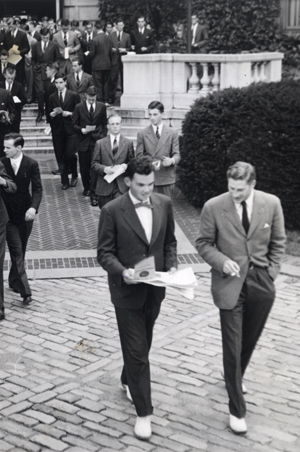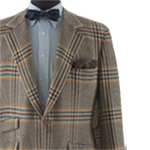

After World War II, American-made clothing became increasingly affordable—and it was still well made. At the same time, the number of students attending universities rose dramatically. Many were veterans taking advantage of the Servicemen’s Readjustment Act of 1944, informally known as the G.I. bill.
Despite the changing demographics, nearly all male collegians wore the same basic items: Oxford cloth button-down shirts, chino trousers, Shetland crewneck sweaters, and penny loafers. Rounding out the wardrobe were a tan cotton gabardine raincoat and a wool duffel coat; a tweed sports jacket and a navy, single-breasted blazer; and two suits, one in gray flannel and one in seersucker. All were accessorized with a half-dozen ties.
The Man in the Gray Flannel Suit was the title of a popular 1955 novel by Sloan Wilson and subsequent film starring Gregory Peck (1956). The title became a catchphrase, and the gray flannel suit became a potent symbol of conformity and upward mobility. It was arguably the most important Ivy style look worn by men not only during college and but also after, in business.
Although the suit’s iconic representation is usually mid-gray, the truth is that during the late 1950s, suits of dark or charcoal gray flannel were the top sellers at leading firms such as J. Press. The lighter hue was thought by many in business and government to be too "daytime" and informal. Dark gray moved into the breach to become the color of choice.

